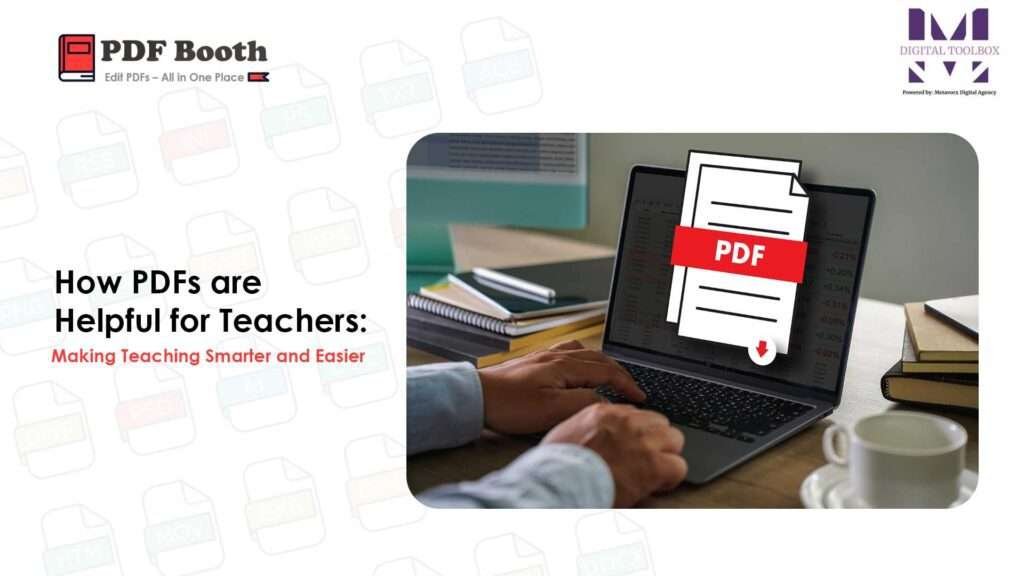How PDFs are Helpful for Teachers: Making Teaching Smarter and Easier

In today’s fast-paced educational environment, technology plays a crucial role in helping teachers organize, deliver, and share learning materials efficiently. One of the most useful tools that teachers rely on is the PDF (Portable Document Format). This format is widely recommended because it maintains the layout, structure, and quality of documents, making it easier for teachers to create and distribute educational content.
Here’s how PDFs are particularly helpful for teachers:
1. Consistency in Formatting
When teachers create notes, worksheets, quizzes, or lesson plans, PDFs ensure that the formatting stays intact across all devices and operating systems. This means that students will see the content exactly as intended, without errors in fonts, spacing, or images.
2. Easy Sharing and Accessibility
PDF files are lightweight and can be easily shared via email, learning management systems, or cloud storage platforms. Students can download, print, or access them from smartphones, tablets, and laptops, making learning materials available anytime, anywhere.
3. Secure and Read-Only Format
Teachers can lock PDFs to prevent unauthorized editing. This ensures that important documents, such as exam papers or official handouts, remain unchanged and secure from accidental modifications.
4. Supports Multimedia and Interactivity
PDFs are not limited to text. Teachers can embed images, graphs, hyperlinks, videos, and interactive forms. This makes learning more engaging and allows students to explore content more dynamically.
5. Paperless and Environment-Friendly
Using PDFs reduces the need for printing physical copies. Teachers can distribute assignments and notes digitally, helping save paper and contributing to environmentally sustainable practices.
6. Organized Storage
Teachers can easily organize and archive teaching materials in PDF format by subject, grade, or topic. This makes retrieving documents fast and convenient, helping teachers stay efficient.
7. Annotation and Feedback
PDF readers often come with tools that allow teachers to highlight text, add comments, or insert notes. This feature is highly useful for providing feedback on student assignments and promoting interactive learning.
8. Compatibility Across Platforms
Whether using Windows, Mac, Android, or iOS, PDFs are widely supported. Teachers don’t have to worry about whether students can open or view files—they just send the document and it works everywhere.
Final Thoughts
PDFs are an indispensable tool in modern education. From lesson planning and assignment distribution to student feedback and secure documentation, this format supports teachers at every step. By incorporating PDFs into their workflow, teachers can make learning more accessible, organized, and efficient for both themselves and their students.
FAQs:
Why should teachers use PDF files for teaching materials?
PDF files maintain consistent formatting across all devices and platforms, ensuring that students view documents exactly as intended.
Can PDFs include interactive content like videos or links?
Yes! PDFs support multimedia elements such as images, hyperlinks, videos, and interactive forms, making learning more engaging.
Are PDF files safe for sharing sensitive documents like exams?
Absolutely. Teachers can lock PDFs to prevent unauthorized editing and maintain the security of confidential files.
How can PDFs help reduce paper usage in schools?
PDFs enable digital sharing of notes, worksheets, and assignments, which helps reduce printing and contributes to environmentally friendly teaching practices.
